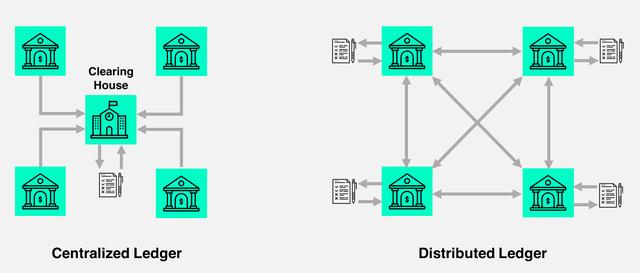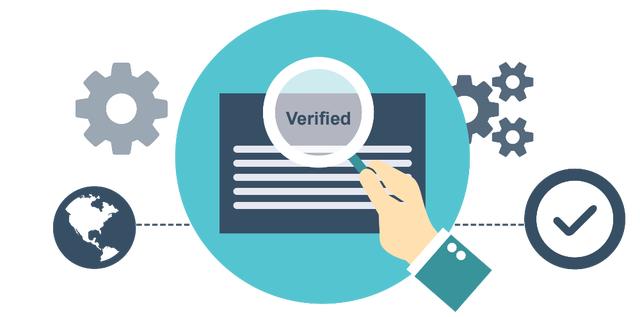Observation | After the halo fades, where is the practical application of the blockchain?
A year ago, people were very interested in blockchain. Slowly, the light faded away. We find that behind this hype, blockchain technology is looking for real applications.

Over the past few years, articles and research papers on blockchain have emerged: "distributed ledger" technology has excited the marketing teams of technology publishers and digital companies. However, has the blockchain found practical applications in the actual operation and provision of urban services? When the concept exits the "hype cycle", what is left behind?
The answer is yes. At the OECD blockchain event held in September this year, delegates learned that this technology has been used in more than 200 cases in the global public service sector. Marcos Bonturi, OECD's director of public governance, provided the following cases. First, Mongolia introduced a blockchain for certified drugs. This technology identified that about 40% of the drugs sold in the country were fake. In addition, Italy has developed a system for tracking academic credentials.
- Onsite 丨 How does the Hainan blockchain strategy go? Important leaders such as Vice Governor of Hainan Province gave the answer today
- This article understands trade and blockchain integration policy measures. Chinese companies and organizations have done these.
- Inventory: 10 most active cryptocurrency investment funds in 2019
Blockchain technology provides the network world with visibility into a set of transactions and makes it impossible to change records after creation. This shows that blockchain technology is very suitable for cryptocurrencies, which can provide them with an unquestionable record of ownership. Bonturi said: "Related applications are emerging in the public service space. In Texas, blockchain is helping homeless people access public services; in Ghana, the government is working with private partners to establish digital land registrations. He added that blockchain-based land registration went smoothly in Estonia, and countries including Sweden and Chile want to follow this Baltic country.
Further deployment is ongoing. Blockchain has the potential to help customs agencies around the world. A recent OECD working paper: Status of Application of Emerging Technologies in the Public Service Sector states that blockchain can provide deeper transparency by providing trucks and vessels arriving at national borders. And traceability to improve security, improve taxes, provide record keeping, and increase efficiency. But there is no case of blockchain operation at the borders of various countries: Boris Johnson's "technical solution" remarks that caused the UK and Ireland to diverge their regulatory systems without borders are deeply rooted in science fiction .

Figure 1: OECD Source: NHS Confederation
The light fades: standardized solutions replace blindly adding new blockchain business
However, in general, the discussion about the potential of blockchain has steadily shifted from fantasy to reality. Barbara Ubaldi, deputy director of public sector reform at the OECD, said: People are questioning the potential of blockchain more than two or three years ago. "We are no longer just hype."
Ubadi said that behind the hype, blockchain applications in the public sector are actually progressing slowly. She believes that “there is no strong evidence of progress” in many areas, and the main challenges of blockchain include “capacity building in the public sector” and “urgent need” to work more closely with the private sector. Other obstacles include the lack of high-quality data, the need for common standards, and poor interoperability between public sector information technology systems.
The OECD points out that risk aversion is an important resistance. In an OECD study, two-thirds of the countries surveyed said they would prioritize standardized solutions rather than building systems around business needs. Most countries prefer to use proven technology rather than try untested alternatives. In November 2018, a report published by Digital Catapult, "The State of Blockchain Action in the British Market," reflected this. The report found that British blockchain companies are still struggling to find customers outside the financial services industry.
Lack of public institutions' confidence in the regulatory environment has exacerbated this risk aversion. Bunturi said regulators are lagging behind in “developing rules governing data use and protecting citizens’ privacy issues, ”and he believes that many countries lack the regulatory framework needed for small-scale pilot programs in good faith with blockchain. Bunturi added that the fastest progress in terms of regulatory obstacles will be those that provide the "least path to resistance".

Figure 2: Distributed Technology Source: Medium
The way forward: the private sector leads the public sector
Nonetheless, some countries still have merit and can provide valuable lessons for public officials in other countries. An introduction to the introduction of digital markets in Australia, Estonia, New Zealand and the United Kingdom to streamline the procurement of advanced digital technologies and commissioning by small vendors was praised by the OECD report. The OECD said that since the UK digital market was launched in 2014, more than £ 4.3 billion ($ 5.5 billion) of contracts have passed through the market, and nearly half of them will go to SMEs. Following this year the UK launched SPARK, an innovative marketplace that gives public sector clients access to the latest technologies.
Strengthening cooperation with the private sector can also accelerate progress. Countries such as Chile, Panama and Latvia have promoted public-private partnerships in pilot programs to test emerging technologies. Estonia also provides a "sandbox" environment for technology companies to enable them to develop applications and solutions.
However, in order to fully realize the potential of blockchain's distributed and generally transparent structure, governments of various countries may have to admit that many blockchain applications are best guided by sector agencies or private companies. A recent study by the EU Joint Research Centre revealed that many blockchain experiments in the public sector have followed a centralized approach led by the government, with officials retaining most decision-making power. But a key advantage of this technology is that it can provide accurate information to everyone involved in a certain field of activity; if they do not have the power to use this technology to make decisions, then most of the potential of the blockchain cannot be realized of.

Figure 3: Academic Certification Source: Techloyce
Certified education: Blockchain resumes are certified by various circles
The EU Joint Research Centre report uses the Malta government project as an example, which started in 2017 to verify academic credentials. It is based on the "blocked authentication" open standard that allows certificates to be created, issued, viewed, and verified through the blockchain.
The app was first developed in 2015 by MIT and the Blockchain Certified Startup Learning Machine. It allows easy integration with existing academic record keeping systems and provides users with a wallet for taking ownership of their records. At the same time, the system saves costs for educational institutions, eliminating the need to check copies of certificates or transcripts. This year, Italy began to use a similar "Diplome" system to verify academic qualifications on a larger scale.

Figure 4: Authentication Source: Pinterest
From blockchain resume to identity verification
The Centre's report states that this model can be extended to other forms of authentication and states that Malta is exploring the use of this model to verify the identity of refugees providing public services. The researchers said that the main reason hindering the widespread application of this technology is the lack of consistency in the regulatory and legislative frameworks of various countries, which is not conducive to the development of internationally recognized blockchain identification systems.
Therefore, the blockchain began to look for real applications in providing public services. Of course, these applications are very suitable for the technical characteristics of the blockchain, including providing global visibility of agreements and transactions between individuals, and providing deterministic and clear information for all people active in a certain field, including government agencies .
Ubaddi said that the biggest potential of the current blockchain lies in identity verification. The OECD says that one fifth of the world's population still has no legal or officially recognized status. So the opportunity is obvious, but don't believe the hype.
Conclusion
In short, although the blockchain has passed the hype period and the heat has slowed down, the actual application is in full swing everywhere. Whether it is a private company leading a public company or compliance first, the blockchain technology can play a role in speculation Silent accumulation, a journey of thousands of miles, accumulated in pacing, a boat of thousands of miles, completed by the compass. We must not only adhere to the atmosphere of speculation, but also establish our own direction in the mist. We believe that the fastest-growing country in the future of the blockchain is definitely a country that can clear its regulatory attitude and turn resistance into momentum.
Article Source:
Blockchain: Hype or Blueprint?
source:
https://www.globalgovernmentforum.com/blockchain-hype-or-hope
Author: David Whitehouse
We will continue to update Blocking; if you have any questions or suggestions, please contact us!
Was this article helpful?
93 out of 132 found this helpful
Related articles
- Observation 丨 Undocumented is better than evidence-the combination of virtual and real identity
- Ban cryptocurrency payments? Even Russia ’s own officials find it difficult
- Blockchain 丨 Bakkt CEO will become Georgia senator, Bitcoin is expected to enter mainstream US politics
- Interview with Li Ming of the Ministry of Industry and Information Technology: Understanding Decentralization of Blockchain with Cross-border Transactions and Cold Chain Logistics
- People's Daily Online: How do countries welcome the advent of the blockchain era?
- Was Telegram defended, was the "extra" 6 months to fight enough?
- Is an exchange losing $ 250 million in cryptocurrencies a Ponzi scheme: Quadriga Bizarre Story





